If you were one of the estimated three million people who discovered gardening this year, don’t imagine that now is the time for hunkering down indoors with re-runs of Gardeners’ World and a pile of seed catalogues. There is much to be done outside, especially if you are determined that next spring and summer will bring an even more bounteous and beautiful garden. There is not much else to look forward to, so you may as well give yourself the gift – and smug satisfaction – of thriving plants. Here are some of the things you can do with optimism for better times ahead.
Go overboard on bulbs
Whether you plant them in a small window box, a balcony container or a large garden, a bag of bulbs is a relatively inexpensive and easy way to invest in future happiness. “There is nothing like a flash of tulips to really put a smile on your face in late spring,” says the garden designer and TV presenter Katie Rushworth. “Always plant more in a pot than you think you’re going to need – layer them.
“When people see tulips out everywhere, they think they can go and buy them at the garden centre, but actually you can’t.” You can find flowering tulips in some garden centres, “but there is never anywhere near the same number of varieties as you can buy in autumn. To plant them now and see them come up next year is much more rewarding.” Get them in within the next month.
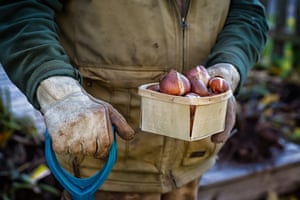
Don’t stop at tulips: the gardening writer and designer Naomi Slade calls bulbs “spring’s bling” and suggests planting alliums, camassia and narcissi.
Rearrange your borders
Borders can be tweaked or completely transformed. “Plants don’t always behave as they say on the label or you thought they might,” says Slade. “I have a helenium that is doing brilliantly, but it’s huge and it’s at the front of the border. Over the next few weeks, I’m going to move some of the things that are getting crowded out into a different space in the garden and move the helenium backwards.”
Mulch your plants
Spreading mulch (such as compost, well-rotted manure or wood chippings) at this time of year – especially on a vegetable plot – will mean there is enough time for it to work its way into the soil over winter, says Walker, “and will give plants or seeds you sow in the spring a really good start. If you mulch in spring, it tends to sit on the surface and it can be quite hard to sow into, so it’s worth doing now.” It also means you can clear weeds and improve the look of your beds. If you have moved plants around, it is particularly important to give them a good mulch.
Sow sweet peas
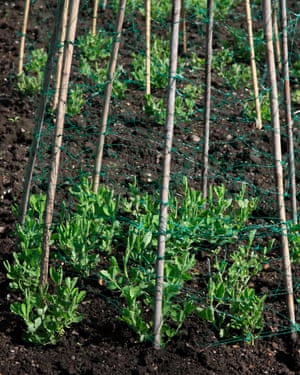
Start some early sweet peas, says Saul Walker, the head gardener at Stonelands House in Devon and the host of the gardening podcast Talking Heads. “They should germinate in the next month and you’ll get sweet peas about three or four weeks earlier than if you sow them in spring, which means you can plant them out in March or April. Some people say you get better flowers as well.” The impressive sweet peas you see at flower shows are sown now, he adds. They can be sown inside on a windowsill as long as it is not a room that gets too warm. If you don’t have root trainer pots, then any fairly deep pot will do.
Divide plants
As well as keeping plants healthy, dividing plants is like getting them free, says Rushworth. Do it now and next year your garden should have a more established, abundant look. “If a herbaceous perennial has done really well, lift up the root ball and break it into a couple of pieces.” This can be done by hand, or with a fork, although she adds that she has been known to use an old breadknife to saw through woody roots. You can then plant it around the garden (in similar light conditions) or near the original plant.
People tend to buy one of each plant, says Rushworth, “and it can look quite ‘bitty’ – it always looks better if you plant in threes or fives. Block out an area with the same variety and it will look better for having more of it.”
Make way for roses
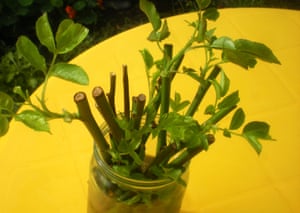
If you have roses, take cuttings now, says Rushworth. She estimates that there is about a 50% success rate, “so take more cuttings than you think you need”. She insists it is easy. Take a stem from the new growth – where it is soft and pliable – of about pencil-thickness. “Cut straight across below a node, then cut above a node on a diagonal 15-20cm (6-8in) further up the stem.” Remove all the leaves and you will have an unprepossessing twig. Make a small trench in the soil, add some grit and plant your cutting so that it pokes up by about 5cm.
“Next year, you should start seeing shoots; by next autumn, you should have a rose bush you’ve made all by yourself.” It won’t look that impressive next summer – it should flower the following year – “but it’s really rewarding and it doesn’t cost anything”, says Rushworth.
Ordering some bare root roses now is a speedier option – and they are much cheaper than buying potted roses next year. “They might not look like much when they arrive, but if you get them into the ground or in a pot, with some good soil or compost, they will take off,” says Slade. “They’ll start growing roots over winter and then they’ll be in a good place to get flowering in spring.”
Nurture your meadow
What do you mean you don’t have acres of fashionable wildflower meadow? In that case, sacrificing your lawn, or creating a small wild patch somewhere in your garden, will do.
“Sow yellow rattle, the parasitic plant that will stop the vigour of the grass and allow wildflowers to establish,” says Walker. “The seeds need to go through cold stratification [over winter] to get them to germinate in the new year so now is the time to sow them. The best thing to do is scuff up the grass, because you want the seed to be in contact with bare earth. It looks a bit rough to start with, but they will establish quite nicely.” Depending on the species you want to grow, the rest of the meadow will be sown in spring, but the yellow rattle will have helped to create an ideal environment.
Clean your glass
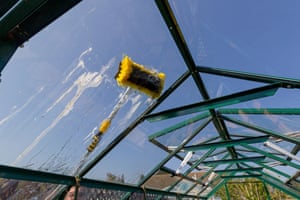
A boring, but satisfying, job. If you are lucky enough to have a greenhouse or cold frame, give the glass a good clean (as well as the rest of it – detritus and disease will have built up). “Now that we’re getting less light, you want to make sure your greenhouse is getting as much of it as possible,” says Walker. It is the same indoors, if you are growing on windowsills. “It’s worth keeping your windows clean, because you’ll be surprised how much light is kept out by dirt.”
Provide homes for wildlife
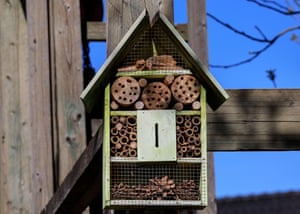
Clean out bird boxes, or put up new ones, to fill your garden with life-affirming cheeping come spring. A pile of logs, or a homemade or bought shelter, will give hedgehogs, frogs and toads somewhere to spend the winter; they should repay you by munching slugs.
Other pest-eaters, such as ladybirds (who feast on aphids), will appreciate somewhere to hibernate from late autumn – create a home using pine cones, small logs or sticks. Installing a bug hotel means “you’ll be attracting pollinators”, says Walker. “Hopefully, they’ll get out early in the spring, especially [to help] things like fruit trees that flower then.”
Plan – and dream of sunnier days ahead
Seasoned gardeners think ahead. Make a note about what worked well this year, what did not and whether there were periods when you could have done with more flowering plants, advises Rushworth. “It’s really easy to forget,” she says. “Make plans; then you can hit the ground running in spring.”
from Lifestyle | The Guardian https://ift.tt/3mrMDax
via IFTTT

comment 0 Comment
more_vert